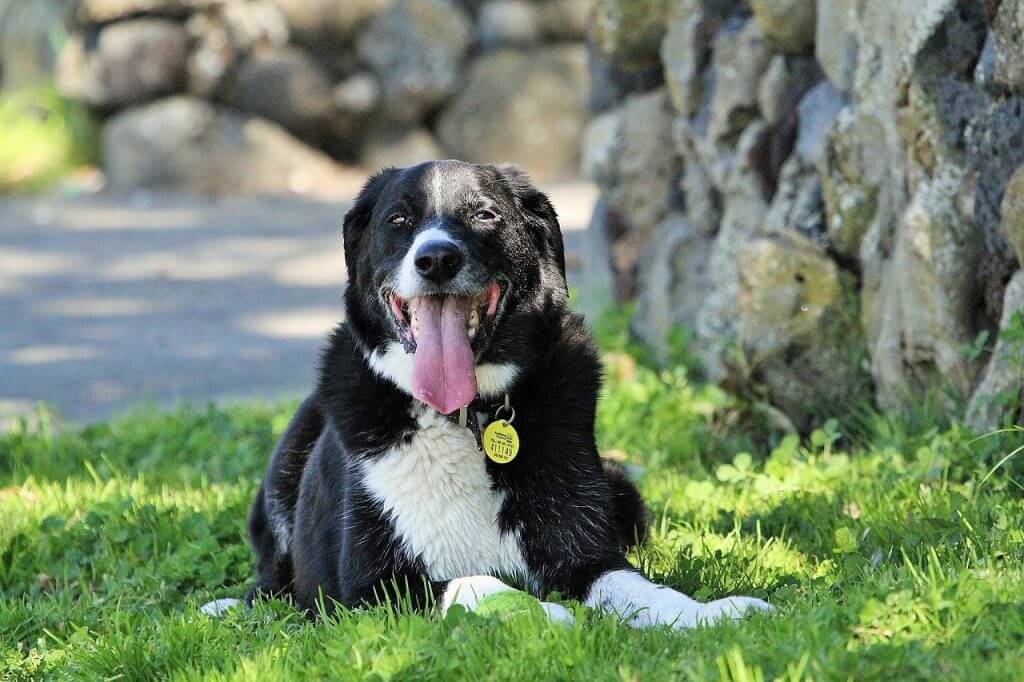This post may contain affiliate links. You can view our affiliate disclosure here.

Dog barking is a normal phenomenon, but it may lead to problems with the people living in your home as well as your neighbors, especially at night.
Dogs bark to express various emotions, and each bark can imply different things relative to the situation. Although it is unreasonable to expect a dog or puppy not to bark, too much barking can become problematic.
A dog barks for various reasons such as fear and aggression. If it’s getting out of hand and you want to stop your dog from barking, you can use any of the 6 methods in this article.
It’s likely that not all of the below methods will be effective. The solution depends on the individual situation of the dog. If you can’t diagnose the issue, try each of the methods and see which is most effective.
Note: Dogs will be referred to as a “he” in this article for convenience, but the same principles and concepts apply to female dogs.
How To Get Your Dog To Stop Barking
Putting your dog on a training schedule can train them on how to respond to speaking and quiet commands.
Tending to needs of your puppy by setting a potty break routine can also be helpful. In case the puppy is continuously barking or seems to be in some pain, you should enlist the help of a veterinary professional.
1. Get rid of the motivation.

The idea is that something is motivating or provoking your dog when he starts barking, or else he wouldn’t be doing it.
So you have to deduce what the provocation is and eliminate it, thus stopping the dog from continuing with the barking habit.
Example: Barking At People Passing By
If your dog barks at animals or people who are merely passing by the house, control his behavior by closing your curtain or placing the dog in a different room.
If he barks at your neighbor or animals passing by when he’s in the yard, take him indoors.
You can also call your dog to come to you. Praise him for coming back to you instead of barking.
Avoid leaving the dog outdoors unsupervised all day and night.
2. Ignore the barking.
Ignore your dog’s barking until he stops. Doing this means that you give him no attention when he’s barking.
Your attention will reward him for barking. Don’t touch him, talk to him, or even throw any glances at him. When he finally gets quiet, even to catch a breath, reward him.
To achieve success using this method, you have to patient enough until the dog stops barking. If he barks for about an hour and you get frustrated enough to shout at him to be silent, then the next time, he’ll bark for more than an hour. The dog will believe that he just has to bark long enough to get your attention.
Example: Barking In A Confined Area
When you place your dog or puppy in a crate or a confined area, give him your back and ignore his barking. When he stops the barking, turn back, praise him and reward him with a treat.
When he understands that being silent earns him a treat, increase the time he has to stay quite before receiving a reward.
It is important to start small: give him rewards for being silent for a few seconds, then gradually lengthen the required quiet time.
Make it fun by varying the amount of quiet time needed. In some cases, you can treat him with rewards after about 5 seconds, then 13 seconds, then 4 seconds, then 21 seconds, and so on.
3. Desensitize your dog to the stimulus.

Over time, your dog will slowly become accustomed to whatever is making him bark.
Start with the stimulus (the thing which makes him bark) from a distance. It should be far away enough that he won’t bark at the sight of it. Give him a lot of treats.
Next, place the stimulus closer (for example, as close as a few meters or three to four feet) and give him treats. When the stimulus is not within sight, avoid giving the dog rewards.
The point is to make your dog associate the stimulus with pleasant things.
Example: Barking At Other Dogs
Ask a friend or neighbor with their own dog to stand, with their leashed dog, far enough away that your dog cannot bark at him.
Tell your friend with their dog to come into sight, and begin treating your dog with rewards. When the other dog and neighbor are out of sight, stop feeding your dog. Repeat this process several times.
4. Train your dog to respond to commands.

The first step of this method is to train your dog to bark only on command.
Command the dog to “speak”, wait for him to bark a few times, and stick a delicious treat near his nose. When he stops barking to sniff the treat, praise him and let him eat the treat. Repeat this process until he begins barking when you say “speak”.
After the dog is adept with the bark command, train him to the “quiet” command.
Take him to a quiet setting without distractions and command him to “speak”. As soon he starts barking, say “quiet” and put a treat near his nose. Praise him for keeping quiet and let him eat the treat.
5. Make your dog do an incompatible activity.

When your dog begins to bark, make him do an activity which is incompatible and conflicts with his barking.
Teach your dog to react to the barking stimuli with an activity that inhibits him from barking: for instance, lying down on his bed.
Example: Someone At The Door
Place a treat in an area away from the front door (preferably on a mat), and call the dog to come get it.
When he goes to get the treat, open the door while he is still on the mat. If he rises, you have to close the door immediately.
Do this process multiple times until he remains on the mat with the treat when you open the door.
Up the ante by making your neighbor ring your doorbell when the dog is on the mat. Treat him to tasty rewards if he remains in his place.
6. Keep your dog active.

Ensure your dog receives enough mental and physical exercise daily.
A tired dog is a good dog. They are much less likely to start barking due to boredom or frustration.
Depending on the age, health, and breed of your dog, he may need a series of walks and a good ball to chase. Also consider interactive and engaging toys.
If your dog has a lot of free time during the day, it might be a good idea to attach a leash to his collar and do things like go for walks, play in the garden, or even play some scent games.
Conclusion
The above methods are some of the best for curbing your dog’s barking. In the event that none of them work for you, you can try other methods such as using a bark collar.
Keep in mind that some dogs are very troubled and may need professional help.
You could get the advice of a professional behaviorist or the help of a dog trainer. But professional dog trainers (who also train dogs to respond to commands) can cost an arm and a leg – something like $500 for 3 hours, or even more. Who’s going to pay this amount of money for just 3 hours of help?
There’s a solution. You can get instant access to a dog training program by a certified dog trainer with over a decade of experience working with clients.
This trainer has figured out that barking issues fundamentally come down to learning how to calm your dog down.
And so he’s put together a series of emotional control exercises that have been proven to overcome barking and other dog behavioural issues.
This dog training package is substantial, and it costs a tiny fraction of what you would pay for the services of a typical dog trainer or behaviorist.
You can alternatively read my review of the program.
Best of luck in correcting your dog’s barking problem.




Hi Kevin, thanks for this article. I have a 5-year-old German Shepherd that has a huge barking (and aggression) problem. More specifically, when he sees any other kind of dog (doesn’t really matter how big it is) he just goes insane – barking and lunging aggressively. We can barely restrain him with the leash.
I’m trying your third tip that talks about desensitizing. I’ve been working quite hard at it. Whenever he gets into that “zone” I make physical contact to try to “snap him out of it”. I feel like I’ve been making some progress, but not as much as I’d like. Do you have any thoughts on this? Thanks again!
Hi Mark, thanks for the comment. It sounds like your dog’s aggression problem is quite severe. Sometimes cases are so bad that they cannot be solved through normal means, and need a heavier approach. I would continue working on what you’re doing and see if things improve. The idea is to get your dog to see you as the “pack leader”. If you don’t see much improvement in the long run, the next step I would recommend you take is checking out the dog training program I linked at the end of the article. Just click the red button and it’ll take you right there. They have a community that you can tap into and hopefully get the help you need. Good luck!